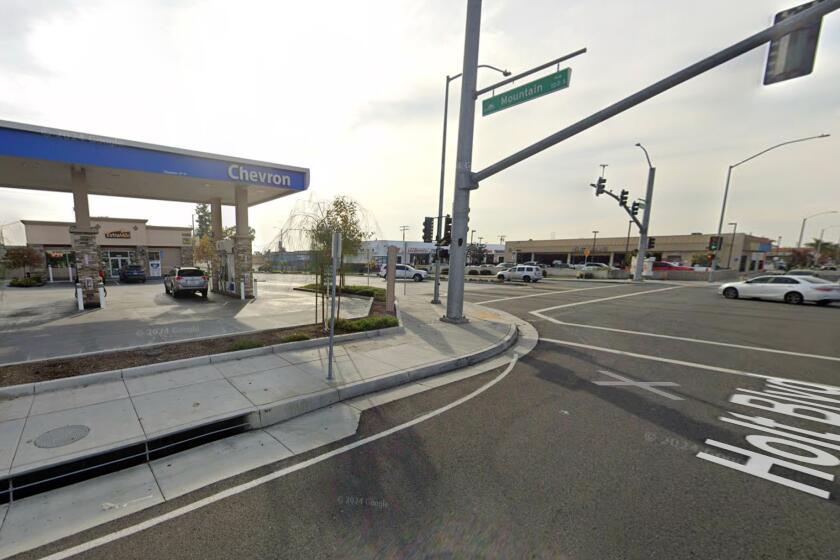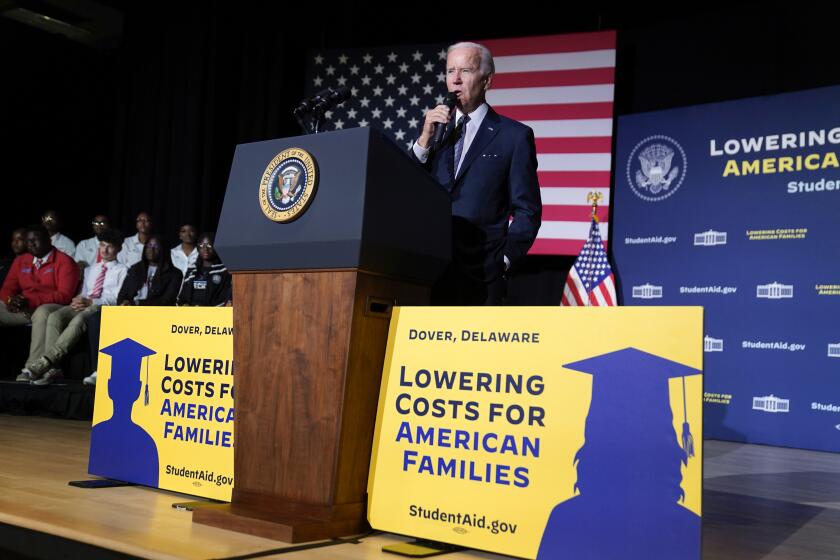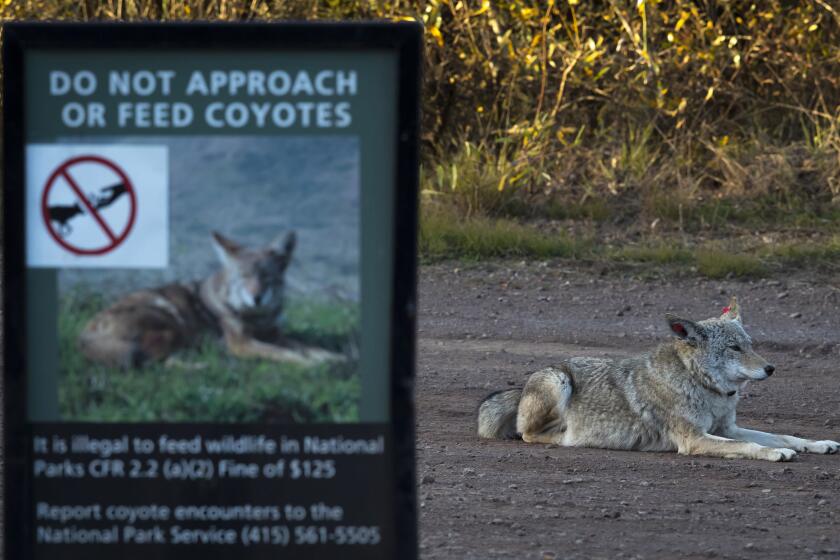Cost of building Southland section of bullet train could jump by $11 billion, documents show
The cost of constructing the Southern California section of the state bullet train could jump by as much as $11 billion over estimates released earlier this year, though rail authority officials caution that their new numbers assume a more expansive design than is likely to be built.
The new estimates are contained in environmental reports prepared for Thursday’s meeting of the authority board, which will review planned routes throughout the Southland.
The reports acknowledge that the new cost estimates could affect the $77-billion price tag of the Los Angeles-to-San Francisco system, though they also use a different methodology than previous figures and are therefore not directly comparable.
The new numbers cover the cost of building three segments from Palmdale to Anaheim, which include the difficult passages through the San Gabriel Mountains, urban Los Angeles and the crowded rail corridor to Anaheim.
The Palmdale-to-Burbank section could hit $20.33 billion, up from $14.87 billion in the estimates prepared for the 2018 business plan. The construction of rail from Burbank to Los Angeles could rise to $3.55 billion from $1.25 billion. And the Los Angeles-to-Anaheim section might go as high as $4.8 billion, up from $3 billion.
Those costs do not include inflation, which would further boost them by 15% to 20% by the time the construction is completed, based on the rail authority’s past assumptions about rates of inflation.
Over the three sections, the potential costs amount to a 50% surge from the business plan estimates released in February.
The new estimates were created for environmental planning that attempts to identify the “maximum possible footprint” for the project, said rail authority spokeswoman Lisa Marie Alley. That is not necessarily what will be built, though the entire design and route of the system has not been selected.
Alley also noted that the costs of building train stations in Burbank and Los Angeles are duplicated in adjacent project sections, so that whichever one is formally approved first can move forward with constructing a station. That would account for at least hundreds of millions of dollars in the cost differences, based on the rail authority’s prior documents.
“We would not consider them cost increases, but two different estimates based on different factors and needs,” she said.
The project has undergone a series of cost increases over the last decade from an original estimate of $33 billion to the current $77 billion.
Civil engineering experts said they were astounded by the differences in the estimates, which they said they had never seen in other projects.
“I can’t understand why they have cost estimates that are so different,” said William Ibbs, a UC Berkeley civil engineering professor who has consulted on high speed rail projects around the world. “There is more beneath the surface than an expanded footprint. I would have thought that the earlier estimate would have already included some environmental risks.”
The 38.6-mile route from Palmdale to Burbank would include 25.2 miles of tunnels, leaving just 13.4 miles above ground. Those tunnels would have little variation in their potential environmental effects, Ibbs said, making the cost ranges “even more perplexing.”
James Moore, director of USC’s transportation engineering program, was similarly skeptical about the rationale for the differences.
“We are talking about the same project,” Moore said. “The differences should not be that large. It is an attempt to normalize the numbers and get them into the public discourse.”
The environmental documents describe a wide range of effects throughout the region, which are covered in a seven-page list of meetings with various agencies, officials, politicians and stakeholders.
The rail line, for example, would require rerouting part of the Pacific Crest Trail, including the construction of an underpass so that hikers could cross the tracks. The document said that its design met “objectives” after consultation with the Pacific Crest Trail Assn. and the U.S Forest Service for noise and visual effects to trail users.
If the estimates in the environmental documents are closer to the actual costs than those in the business plan, it would again exacerbate the funding problems facing the project. Even at the current cost estimate, the project is about $50 billion short of what it needs for completion.
Funding for construction of 119 miles of rail through the Central Valley comes from a $9-billion bond measure approved by voters in 2008, $3.5 billion in grants from the Obama administration and a 25% share of the state’s cap-and-trade greenhouse gas auction program, which generates an estimated $750 million a year.
Elizabeth Alexis, a co-founder of a Bay Area watchdog group, noted that the authority’s cost estimates for either the business plan or the environmental plan are both predicated on unrealistically low inflation projections.
“If you had real inflation numbers, you would be over $90 billion with a narrower scope for the project,” she said. “The worst thing they can do is drip drip these cost numbers out. They have to convince people they are in control.”
Follow me on Twitter @rvartabedian
More to Read
Start your day right
Sign up for Essential California for news, features and recommendations from the L.A. Times and beyond in your inbox six days a week.
You may occasionally receive promotional content from the Los Angeles Times.






